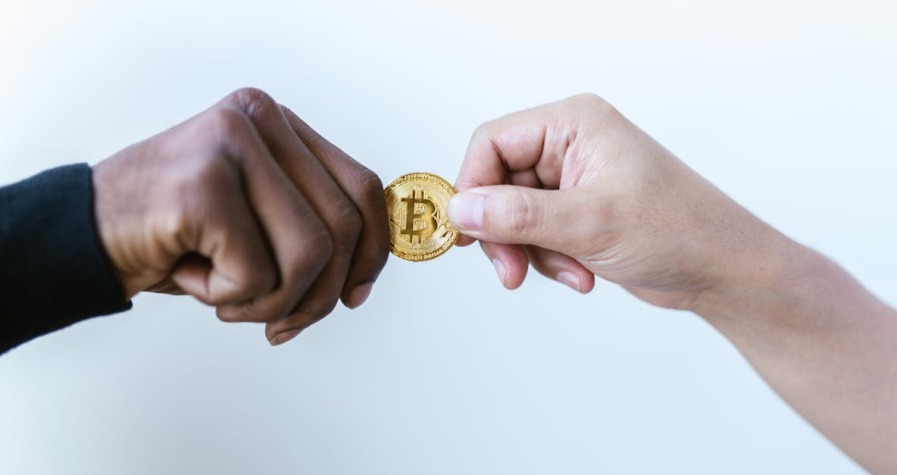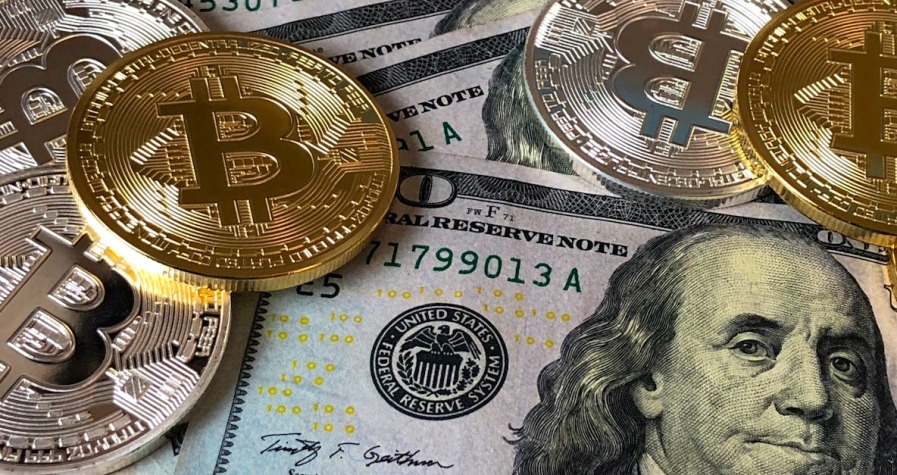Key Takeaways
- A rug pull is a cryptocurrency scam where developers abandon their project and steal investors’ funds, leaving worthless tokens behind – essentially the crypto equivalent of “pulling the rug out” from under investors’ feet.
- Two main types exist: soft rug pulls (technically legal but involve market manipulation and project abandonment) and hard rug pulls (illegal schemes using malicious smart contract code to trap funds).
- Warning signs include anonymous development teams, rapid unexplained price spikes, short liquidity lock periods, poor community engagement, missing whitepapers, and lack of third-party security audits.
- High-profile examples like OneCoin, Squid Game Token, and AnubisDAO demonstrate how these scams can steal millions or billions from investors across different blockchain platforms and timeframes.
- Protection requires thorough due diligence including verifying team credentials, checking smart contract audits, confirming liquidity locks, and using security tools like blockchain explorers and DeFi safety platforms.
- Legal recourse remains limited due to developer anonymity, cross-border jurisdiction issues, and the irreversible nature of blockchain transactions, making prevention far more important than recovery.
You’ve probably heard whispers about “rug pulls” in cryptocurrency circles but might not fully understand what they entail. These deceptive schemes have become one of the most notorious threats in the digital asset space, costing investors billions of pounds worldwide.
A rug pull occurs when cryptocurrency developers abandon their project and run off with investors’ funds, leaving worthless tokens in their wake. It’s essentially the crypto equivalent of pulling the rug out from under someone’s feet – hence the name.
Understanding how these scams operate isn’t just useful knowledge; it’s essential protection for anyone venturing into decentralised finance or investing in new cryptocurrency projects. With the right awareness, you can spot the warning signs before it’s too late.
What Is a Rug Pull?
A rug pull occurs when cryptocurrency developers suddenly abandon their project and steal investors’ funds. The term describes the deceptive practice of creating a seemingly legitimate cryptocurrency or DeFi protocol only to drain its liquidity pool and disappear with the money.
You encounter rug pulls primarily in decentralised finance (DeFi) environments where developers have access to large amounts of cryptocurrency locked in smart contracts. These scams typically target new investors who invest in promising projects without conducting proper due diligence.
The mechanics involve developers creating attractive investment opportunities through new tokens or yield farming protocols. They build initial credibility by providing fake roadmaps, impressive marketing materials and temporary price increases. Once sufficient funds accumulate in the project’s liquidity pools, the developers execute their exit strategy by withdrawing all available funds.
| Rug Pull Statistics | Value |
|---|---|
| Total losses in 2021 | $2.8 billion |
| Average loss per victim | $15,000 |
| Most common platform | Binance Smart Chain (37%) |
| Detection timeframe | 24-72 hours post-launch |
Your vulnerability increases when investing in projects with anonymous teams, unlocked developer tokens or excessive control over smart contract functions. Rug pull schemes exploit the immutable nature of blockchain transactions, making fund recovery virtually impossible once the theft occurs.
The cryptocurrency community has identified three main types of these scams: liquidity pulling, where developers remove all liquidity from decentralised exchanges; dumping, where large token holders sell their entire positions simultaneously; and limiting sell orders, where developers prevent investors from selling their tokens whilst continuing to extract value from the project.
Types of Rug Pulls
Rug pulls fall into two distinct categories that differ significantly in their execution methods and legal implications. Understanding these variations helps you identify potential scams before investing your cryptocurrency.
Soft Rug Pulls
Soft rug pulls represent the more subtle form of cryptocurrency fraud that technically remains legal whilst devastating your investment portfolio. Developers execute these scams without malicious smart contract code, instead relying on market manipulation and strategic abandonment.
The primary mechanism involves developers dumping their token holdings rapidly after artificially inflating the price through marketing campaigns and fake partnerships. You’ll notice the development team suddenly disappears from social media platforms, stops publishing project updates, and abandons their roadmap commitments entirely.
Key characteristics of soft rug pulls include:
- Sudden communication cessation where developers delete Twitter accounts, Discord servers, and official websites
- Token dumping involving large-scale selling of developer-held tokens causing price collapse
- Project abandonment with no further development, updates, or community engagement
- Liquidity withdrawal from decentralised exchanges leading to trading difficulties
These schemes prove particularly harmful because you can’t recover your funds through legal channels, as no fraudulent code exists to prove criminal intent.
Hard Rug Pulls
Hard rug pulls constitute illegal cryptocurrency scams where developers embed malicious code directly into smart contracts to steal your funds. These schemes involve deliberate fraud with provable intent to defraud investors through technical manipulation.
Malicious smart contract functions lock your tokens permanently, preventing you from selling or transferring your holdings whilst allowing developers to drain liquidity pools. The embedded code creates backdoors that give developers unlimited access to investor funds without your knowledge or consent.
Common hard rug pull techniques include:
- Honeypot contracts that allow token purchases but prevent selling through hidden code restrictions
- Mint functions enabling developers to create unlimited new tokens, diluting your holdings instantly
- Admin keys granting developers complete control over smart contract functions and investor funds
- Liquidity locks that appear legitimate but contain hidden withdrawal mechanisms for developers
Hard rug pulls carry criminal liability because the malicious code provides concrete evidence of fraudulent intent, making these schemes prosecutable under cryptocurrency fraud legislation.
How Rug Pulls Work in Cryptocurrency
Cryptocurrency rug pulls execute through systematic manipulation tactics that exploit decentralised finance infrastructure vulnerabilities. Scammers deploy these sophisticated schemes across multiple attack vectors to maximise investor losses whilst concealing their fraudulent activities.
Liquidity Pool Manipulation
Liquidity pool theft represents the most common rug pull mechanism targeting decentralised exchanges. Developers create token pairs with established cryptocurrencies like Ethereum or Binance Coin within automated market makers such as Uniswap or PancakeSwap.
Pool creation tactics:
- Launch tokens with initial liquidity contributions appearing legitimate
- Generate artificial trading volume through coordinated buy orders
- Establish price stability patterns that convince investors of project viability
- Create multiple trading pairs across different platforms to increase perceived legitimacy
Execution methods:
- Withdraw entire liquidity reserves without warning announcements
- Remove token-ETH pairs simultaneously across multiple exchanges
- Transfer extracted funds through privacy coins like Monero for obfuscation
- Delete social media accounts and communication channels within hours of extraction
The liquidity removal causes immediate price collapse as trading mechanisms fail. Your tokens become impossible to sell because no corresponding assets remain in the pools for price discovery or transaction completion.
Token Contract Exploits
Smart contract manipulation enables developers to embed hidden functions that facilitate fund extraction. These exploits operate through pre-programmed backdoors that activate during specific conditions or timeframes.
Honeypot mechanisms:
- Code prevents token holders from executing sell transactions
- Allow unlimited buy orders whilst blocking all sale attempts
- Create artificial scarcity through restricted transfer functions
- Generate false price increases through manipulated supply calculations
Administrative control exploits:
- Retain unlimited minting capabilities after token launch
- Programme automatic fee increases that drain transaction values
- Install pause functions that freeze all trading activities
- Enable selective wallet blacklisting that targets specific investors
Contract modification techniques:
- Deploy upgradeable contracts with hidden malicious updates
- Implement time-locked functions that activate after investment periods
- Create proxy contracts that redirect funds to developer wallets
- Install emergency withdrawal functions accessible only to creators
These contract vulnerabilities remain undetectable during initial code audits because malicious functions activate through complex conditional statements. Your investment becomes trapped through technically legal smart contract execution that fulfils coded parameters rather than investor expectations.
Warning Signs of a Potential Rug Pull
Recognising early warning signs of rug pull scams protects your investments from devastating losses. Several key indicators can alert you to potentially fraudulent cryptocurrency projects before you commit funds.
Anonymous development teams represent the most significant red flag when evaluating crypto projects. Legitimate projects typically disclose founder identities and professional backgrounds, whilst scammers hide behind pseudonyms or provide no team information. Projects with transparent leadership demonstrate accountability and reduce your risk exposure.
Rapid price spikes often indicate market manipulation designed to create fear of missing out. Tokens experiencing sudden 50x price increases within 24 hours typically involve artificial pumping schemes. Organic growth patterns show gradual price appreciation supported by genuine adoption and utility.
Low liquidity lock durations enable developers to withdraw funds quickly without warning. Reputable projects lock liquidity for extended periods, often 12 months or longer. Short lock periods of days or weeks suggest potential exit strategies.
Poor social media engagement and community interaction signal project abandonment risks. Authentic projects maintain active communication channels with regular updates and developer responses. Bot-generated content and minimal community discussion indicate superficial project foundations.
Red Flags in Project Documentation
Missing or unclear whitepapers fail to explain project goals, tokenomics, or underlying technology effectively. Professional cryptocurrency projects provide comprehensive documentation outlining technical specifications, use cases, and development roadmaps. Vague descriptions or contradictory information about token utility suggests hasty project construction.
Absence of smart contract audits from reputable firms indicates security vulnerabilities and potential hidden exploits. Third-party audits verify contract functionality and identify malicious code before deployment. Projects refusing audits or receiving negative audit results carry substantial investment risks.
Incomplete roadmaps lacking specific milestones or achievement timelines demonstrate poor project planning. Credible projects outline detailed development phases with measurable objectives and realistic timelines. Generic roadmaps with buzzwords but no concrete deliverables suggest lack of genuine project vision.
Suspicious Team Behaviour
Developer token dumping after price pumps represents classic soft rug pull behaviour. Team members selling large token quantities immediately following marketing campaigns indicates profit-taking rather than long-term commitment. Monitor blockchain transactions to identify unusual selling patterns from developer wallets.
Sudden disappearance from community channels without explanation signals potential project abandonment. Legitimate development teams maintain consistent communication even during challenging periods. Radio silence following funding rounds or token launches indicates possible exit preparation.
Liquidity removal from trading pools prevents token holders from selling their positions. Developers withdrawing funds from decentralised exchanges create artificial scarcity whilst trapping investors. This technique renders tokens effectively worthless despite maintaining nominal market value.
Refusal to engage transparently with investor questions demonstrates lack of accountability. Professional teams address legitimate concerns through official channels and provide regular project updates. Evasive responses or blocking critical community members suggests hidden agendas.
Famous Rug Pull Examples
OneCoin represents one of cryptocurrency’s most notorious rug pulls, orchestrated by Ruja Ignatova starting in 2014. This Ponzi scheme masqueraded as a legitimate cryptocurrency project and defrauded investors of billions globally. Ignatova disappeared in 2017 when authorities began investigating, leaving investors with worthless tokens and no recourse for recovery.
Squid Game Token capitalised on the Netflix series’ popularity in October 2021, creating massive investor hype through strategic marketing campaigns. The token’s value skyrocketed from $0.01 to over $2,800 within days, generating enormous returns for early holders. Developers suddenly abandoned the project and withdrew all liquidity, causing the token price to crash to near zero and leaving thousands of investors with significant losses.
AnubisDAO promised extraordinary returns through yield farming mechanisms and raised approximately $60 million within hours of launch in October 2021. The project’s smart contracts contained hidden functions that allowed developers to drain liquidity pools without investor consent. Team members deleted all social media accounts and vanished completely, taking investor funds and demonstrating the vulnerabilities of unaudited DeFi protocols.
Meerkat Finance operated for less than 24 hours before executing its exit strategy on the Binance Smart Chain in March 2021. The project claimed to offer high-yield farming opportunities but contained smart contract vulnerabilities that enabled fund extraction. Developers withdrew $31 million from liquidity pools, highlighting the risks associated with newly launched DeFi platforms.
Uranium Finance attracted investors through its yield farming protocol before developers exploited smart contract functions to steal $50 million in April 2021. The project’s code contained hidden migration functions that redirected user funds to developer-controlled wallets. This case demonstrates how technical complexity in smart contracts can obscure malicious intent from average investors.
| Project | Launch Year | Amount Stolen | Platform | Method Used |
|---|---|---|---|---|
| OneCoin | 2014 | Billions | Proprietary | Ponzi Scheme |
| Squid Game Token | 2021 | $3.36 million | BSC | Liquidity Pull |
| AnubisDAO | 2021 | $60 million | Ethereum | Contract Exploit |
| Meerkat Finance | 2021 | $31 million | BSC | Smart Contract Vulnerability |
| Uranium Finance | 2021 | $50 million | BSC | Migration Function Exploit |
These examples illustrate how rug pulls exploit different vulnerabilities across various blockchain platforms, targeting investors through sophisticated marketing campaigns and technical deception methods that make fund recovery virtually impossible.
How to Protect Yourself from Rug Pulls
Protecting yourself from rug pulls requires systematic research and proper security measures before investing in any cryptocurrency project. You can significantly reduce your exposure to these scams by conducting thorough due diligence and utilising appropriate security tools.
Due Diligence Best Practices
Research the project team’s credentials and verify their identities before making any investment decisions. Anonymous development teams present a major red flag, as legitimate projects typically showcase experienced developers with verifiable professional backgrounds and established reputations in the cryptocurrency community.
Examine the project’s smart contract code or request third-party security audits from reputable firms like CertiK, Quantstamp, or ConsenSys Diligence. These audits identify potential vulnerabilities, backdoors, or honeypot mechanisms that could facilitate fund extraction by malicious developers.
Verify liquidity lock status and ownership renouncement to prevent developers from easily withdrawing funds or manipulating token contracts. Legitimate projects lock liquidity for extended periods (typically 6-12 months minimum) and renounce ownership of smart contracts to demonstrate long-term commitment.
Assess the project’s promises and potential returns with realistic expectations, as yields exceeding 100% annually often indicate Ponzi-like structures or unsustainable tokenomics designed to attract initial investors before collapse.
Evaluate marketing tactics for authenticity, watching for fake partnerships with established companies, bot-generated social media engagement, or unrealistic promotional claims that lack substantive technical documentation or roadmap details.
Security Tools and Resources
Utilise blockchain explorers like Etherscan, BscScan, or PolygonScan to review smart contract source code, transaction histories, and token holder distributions before investing in new projects.
Deploy DeFi security platforms such as DeFiSafety, RugDoc, or Token Sniffer that automatically scan token contracts for malicious code, honeypot mechanisms, or other red flags commonly associated with rug pull schemes.
Check liquidity lock verification through services like Unicrypt, Team Finance, or DxSale to confirm that project liquidity remains secured in third-party escrow services and cannot be withdrawn by developers without proper timelock constraints.
Follow trusted cryptocurrency news sources like CoinDesk, Decrypt, or established security researchers on Twitter who regularly publish warnings about emerging scam projects and provide real-time updates on potential rug pulls.
Monitor community discussions on platforms like Reddit’s r/CryptoCurrency or Discord servers where experienced investors share due diligence findings and collectively identify suspicious project behaviour patterns.
Legal Implications of Rug Pulls
Rug pulls exist in a complex legal grey area where prosecuting perpetrators proves challenging due to regulatory gaps in cryptocurrency governance. Current laws don’t explicitly classify rug pulls as illegal activities since developers often exploit technical loopholes rather than committing outright fraud. However, authorities can pursue related criminal charges when evidence demonstrates deceptive intent or illicit conduct.
Money laundering charges frequently accompany rug pull investigations when developers convert stolen cryptocurrency into traditional currency through multiple transactions. Wire fraud accusations arise when perpetrators use electronic communications to deceive investors about project legitimacy or token utility. Securities fraud charges apply if authorities determine that the tokens constitute unregistered securities sold through false representations.
Enforcement Challenges Create Prosecution Difficulties
Regulatory enforcement faces significant obstacles in rug pull cases. Developer anonymity makes identification and prosecution extremely difficult since most perpetrators use pseudonymous identities and operate across multiple jurisdictions. Cross-border transactions complicate investigations as different countries maintain varying cryptocurrency regulations and enforcement capabilities.
Evidence collection presents additional challenges since blockchain transactions, while transparent, don’t always reveal criminal intent. Prosecutors must prove deliberate deception rather than project failure or market volatility. Smart contract complexity requires technical expertise that many legal systems lack, making it difficult to demonstrate malicious code implementation.
Regulatory Response and Legal Framework Development
Financial regulators worldwide are developing clearer legal frameworks to address cryptocurrency fraud. The Securities and Exchange Commission in the United States increasingly treats certain tokens as securities, subjecting them to traditional fraud statutes. European Union authorities are implementing comprehensive crypto-asset regulations that include specific anti-fraud provisions.
Some jurisdictions now require project developers to provide verified identities before listing tokens on exchanges. Regulatory bodies are establishing licensing requirements for DeFi platforms and implementing mandatory security audits for smart contracts. These measures aim to reduce anonymity that enables rug pull schemes whilst increasing accountability for project creators.
| Legal Aspect | Current Status | Enforcement Action |
|---|---|---|
| Direct illegality | Not explicitly illegal | Pursued through related crimes |
| Money laundering | Criminal offence | Active prosecution when provable |
| Wire fraud | Federal crime | Charges filed for deceptive communications |
| Securities fraud | Regulated activity | SEC enforcement for unregistered securities |
| Cross-border enforcement | Limited coordination | International cooperation increasing |
Victim Recovery Options Remain Limited
Legal recourse for rug pull victims remains severely restricted due to the irreversible nature of blockchain transactions and jurisdictional complexities. Civil lawsuits face challenges when developers operate anonymously or from countries without extradition agreements. Asset recovery becomes nearly impossible once cryptocurrency moves through multiple addresses or converts to privacy coins.
Class action lawsuits occasionally emerge for high-profile cases where developer identities become known. However, successful recovery requires proving specific legal violations and locating recoverable assets. Most victims ultimately absorb losses as the cost of legal proceedings often exceeds potential recovery amounts.
Insurance products for cryptocurrency investments remain limited and rarely cover rug pull losses. Some DeFi protocols now offer insurance pools that provide partial protection against smart contract exploits, though coverage typically excludes exit scams or developer abandonment scenarios.
Conclusion
Rug pulls represent one of the most devastating threats in today’s cryptocurrency landscape and understanding their mechanics is crucial for your financial security. Your ability to identify warning signs and conduct proper due diligence can mean the difference between profitable investments and catastrophic losses.
The complexity of these scams continues to evolve but your awareness and vigilance remain your strongest defences. By implementing systematic research practices and staying informed about emerging threats you’ll significantly reduce your vulnerability to these sophisticated schemes.
Remember that recovery from rug pulls is virtually impossible due to blockchain’s immutable nature. Your proactive approach to investment security isn’t just recommended—it’s essential for long-term success in the cryptocurrency space.
Frequently Asked Questions
What is a rug pull in cryptocurrency?
A rug pull is a type of cryptocurrency scam where developers abandon their project and steal investors’ funds, leaving behind worthless tokens. This typically occurs when developers withdraw liquidity from trading pools or exploit smart contract vulnerabilities to drain funds, causing the token’s value to collapse instantly.
How much money has been lost to rug pulls?
According to statistics, rug pull scams resulted in total losses of $2.8 billion in 2021 alone. The average loss per victim was approximately $15,000. The Binance Smart Chain has been identified as the most common platform where these scams occur.
What are the two main types of rug pulls?
There are soft and hard rug pulls. Soft rug pulls are technically legal but involve market manipulation, where developers inflate token prices before selling their holdings and abandoning the project. Hard rug pulls are illegal scams that use malicious code in smart contracts to steal funds directly.
What are the warning signs of a potential rug pull?
Key warning signs include anonymous development teams, rapid price spikes without fundamental reasons, low liquidity lock durations, poor social media engagement, lack of proper documentation, missing smart contract audits, and sudden changes in team behaviour or communication patterns.
Can stolen funds from rug pulls be recovered?
Recovery is extremely difficult due to the irreversible nature of blockchain transactions and jurisdictional complexities. Legal recourse is limited, and insurance products for cryptocurrency investments rarely cover rug pull losses. Most victims are unable to recover their stolen funds.
How do liquidity pool rug pulls work?
Developers create token pairs with established cryptocurrencies and generate artificial trading volume to appear legitimate. Once sufficient liquidity is accumulated, they suddenly withdraw all funds from the liquidity pools without warning, causing immediate price collapse and preventing investors from selling their tokens.
Are rug pulls illegal?
The legal status exists in a grey area. Soft rug pulls often exploit technical loopholes and may not be explicitly illegal. However, hard rug pulls involving malicious code and clear intent to defraud are prosecutable under cryptocurrency fraud legislation and money laundering laws.
How can I protect myself from rug pull scams?
Conduct thorough research by verifying team credentials, examining smart contract code, checking liquidity lock status, and using blockchain explorers. Follow trusted cryptocurrency news sources, monitor community discussions, and never invest more than you can afford to lose in new projects.









